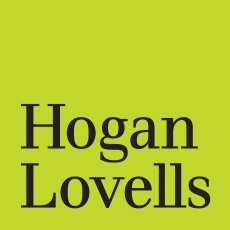Introduction
New rules
Comment
On November 6 2013 the Federal Trade Commission (FTC) announced final changes to the Hart-Scott-Rodino Act rules regarding acquisitions of exclusive patent rights in the pharmaceutical industry. The revised rules, which apply only to transfers of pharmaceutical patent rights, will increase the number of licensing arrangements in the pharmaceutical industry that will be subject to the act's pre-closing filing and waiting period requirements. The FTC estimates that the rule changes will result in filing requirements each year for approximately 30 additional pharmaceutical licensing transactions that were not reportable under the old rules.
Initially proposed in August 2012, the new rules change the test used to determine when an exclusive licence to a pharmaceutical patent transfers rights sufficient to constitute a reportable asset transfer under the rules, assuming that the act's thresholds are met and no exemption applies. The new rules provide that a pharmaceutical patent licence may constitute a potentially reportable asset transfer where it transfers "all commercially significant rights" to the licensee on an exclusive basis.
Under the previous test, such arrangements would be subject to reporting requirements under the act only where they involved the transfer of the exclusive right to "make, use, and sell" under a patent. Thus, where the licensor retained any one of these three rights – to make, use or sell – the acquisition of the remaining rights by a licensee was not reportable even where the act's filing threshold tests were satisfied.
According to the FTC, the efficacy of the 'make, use and sell' test has been eclipsed by evolution in the pharmaceutical industry that has resulted in it becoming "more common for pharmaceutical companies to transfer most but not all of the rights to 'make, use, and sell' under" a patent. The 'all commercially significant rights' test is intended to "capture […] more completely what the 'make, use, and sell' approach was a proxy for, namely whether the license has transferred the exclusive right to commercially use a patent or a part of a patent". Under the new rule:
"the transfer of exclusive rights to a patent or a part of a patent in the pharmaceutical industry [can be] a reportable asset transfer if it allows only the recipient to commercially use the patent as a whole, or a part of the patent in a particular therapeutic area or specific indication within a therapeutic area. … even if the licensor retains the limited right to manufacture under the patent or part of a patent for the licensee."(1)
The new rule reflects the FTC's longstanding focus on transactions and other conduct in the pharmaceutical industry, but also demonstrates its commitment to expand its scrutiny of the industry going forward. Following what many consider a victory for the agency at the Supreme Court in FTC v Actavis this summer, the FTC has remained active on pharma-related issues, including filing numerous amicus briefs in a range of private litigations.(2) and Edith Ramirez, chairwoman of the FTC, has further confirmed that the industry will remain a focus of the agency under her leadership. In light of this, by requiring the filing of a broader range of pharma-related transactions, the new rule appears targeted at increasing the FTC's scrutiny of the industry, which could in turn prompt further investigations and increased levels of enforcement activity in the industry.
For further information on this topic please contact Michele S Harrington at Hogan Lovells US LLP's McLean office by telephone (+1 703 610 6100), fax (+1 703 610 6200) or email ([email protected]). Alternatively, contact Joseph G Krauss, Robert F Leibenluft, or Leigh L Oliver at Hogan Lovells US LLP's Washington DC office by telephone (+1 202 637 5600), fax (+1 202 637 5910) or email ([email protected],[email protected] or [email protected]). The Hogan Lovells website can be accessed at www.hoganlovells.com.
Endnotes
(1) See the full Statement of Basis and Purpose here.
(2) See www.ftc.gov/os/2013/08/130816effexoramicusbrief.pdf and
www.ftc.gov/os/2013/03/130311actelionamicusbrief.pdf.






